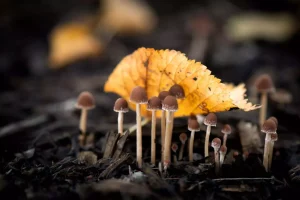Top 10 Edible Plants to Grow in Your Garden

Gardening can be an enjoyable hobby for many people, providing hours of leisurely relaxation while producing fresh vegetables to use in meals! Gardening provides us with both aesthetic pleasure and edible pleasure – there’s nothing quite as rewarding as using your harvest to create delicious homemade meals!
No matter if your garden is small or expansive, growing edible plants is straightforward and straightforward. Here are our top 10 easy-to-grow plants for any space or climate!
1. Basil
Basil brings fragrant flavor and beneficial insects alike, drawing in both. Purple basil can add vibrant hues while offering milder flavors than its green counterpart.
Thai basil ‘Siam Queen’ provides an Asian culinary accent to salads and vegetables. This variety withstands high cooking temperatures while producing vibrant purple blooms.
2. Garlic
Garlic is one of the easiest crops to cultivate. Plant your cloves in fall and harvest in early spring when their nutrition levels peak.
Garlic plants produce scapes in late spring that can be cut off and used like green onions. By doing this, more energy can be directed toward bulb development and growing bigger heads on your plants.
Cucumbers add flavor and versatility to an edible landscape, and are simple to grow – perfect for containers or garden plots.
3. Rosemary
Aromatic rosemary makes a delightful garnish on any cheese platter or cocktail, repelling many common garden pests while being easy to grow in containers and full sun exposure.
Try pairing it with oregano and thyme to enhance flavor while encouraging growth. Furthermore, planting rosemary near the entrance of your garden will attract pollinators while protecting vegetables from carrot flies and other pests.
4. Parsley
parsley stands out from most herbs by being an annual that returns each year; however, it may succumb to extreme cold or sudden temperature increases and die out entirely.
Parsley prefers full sun and well-draining soil that’s rich with nutrients. It makes an excellent companion crop when planted alongside Swiss chard, carrots, and cilantro; its flowers also attract hoverflies – natural predators of aphids, thrips and other pests that might harm it!
5. Thyme
Thyme adds flavor and texture to vegetable and meat dishes while its long history of medicinal usage demonstrates its beneficial properties in supporting respiratory health.
Companion plants for cabbage, tomatoes and potatoes. Hardy yet low maintenance required.
Plants tolerant to dry conditions thrive best in sandy, loamy or rocky soil that drains well.
6. Oregano
Oregano adds an aromatic Mediterranean flair to pizza, pasta and tomato sauce dishes, grilled chicken kabobs, potatoes and white beans as well as salads.
Oregano (Origanum vulgare) is a quick-to-grow, sun-loving herb with beautiful blooms that thrives both indoors and out in containers or the ground. Like its related species marjoram (Origanum majorana), but with spicier leaves that bloom more often.
7. Rosemary
Rosemary is an easy, low maintenance plant to cultivate into either a hedge or ground cover in full sun, and its strong scent helps deter garden pests such as cabbage moths and carrot flies, while drawing pollinators that benefit vegetable crops.
Pair rosemary with parsnips to keep carrot flies at bay, or with kale for an eye-catching front yard vegetable garden that provides visual interest in your edible landscape. Borage plants offer their purple blooms and cucumber-flavored leaves as an added complement.
8. Thyme
Thyme is an herb with numerous uses in the garden. Not only can it add delicious scent and flavor to dishes, but it’s also useful in keeping plants free from disease.
Thyme is highly resistant to most pests such as cabbage worms and flea beetles, making harvesting convenient throughout the summer and into winter in milder climates.
Try golden lemon thyme for its zesty fragrance and unique lime flavor, or caraway thyme for its warming earthiness. Both varieties thrive in full sunlight with well-draining soil that doesn’t contain excess nitrogen.
9. Basil
Herbs add fresh flavor and health benefits to every dish they’re added to, while also being beneficial in the garden.
Basil has long been used to repel tomato hornworms and enhance the flavor of homegrown tomatoes, while providing excellent companion plant benefits for beans, beets, eggplant and peppers.
Purple Basil (Ocimum x citriodorum ‘Pesto Perpetuo’) makes a stunning and colorful addition to your kitchen garden, with rich flavor and striking color contrast.
10. Thyme
Thyme is a perennial that thrives both as ground cover and container garden plant, drawing pollinators and contributing to an eco-diverse garden ecosystem.
Thyme can be harvested just prior to flowering for optimal flavor, as well as easily propagated and grown from seed. SESE provides three varieties of thyme: German winter thyme, summer thyme and creeping thyme.



